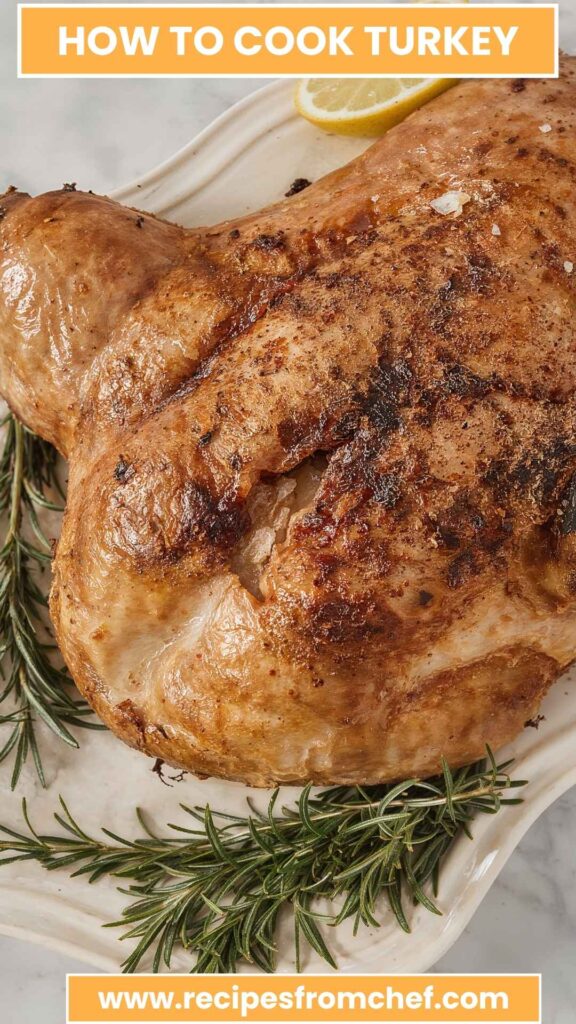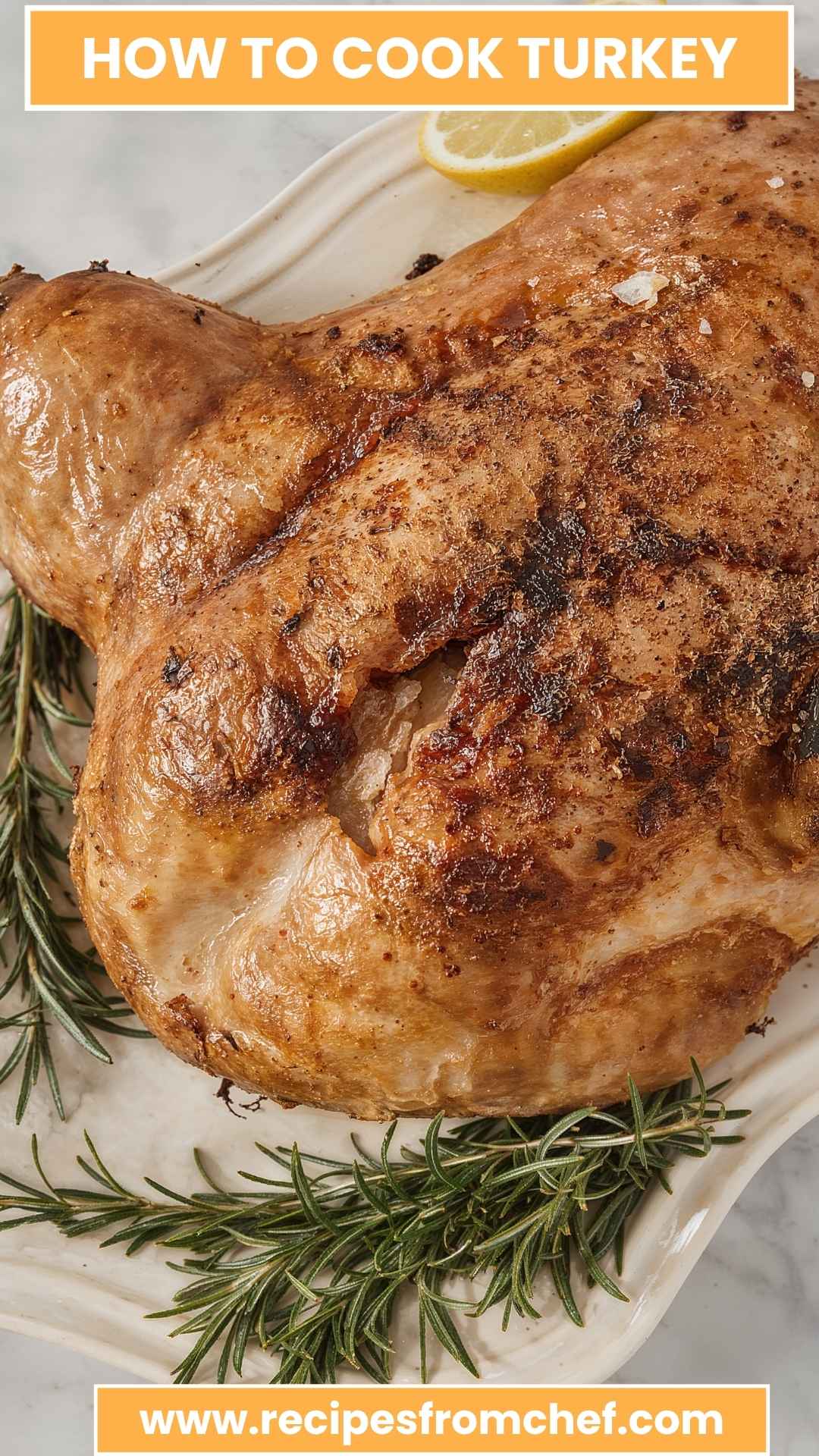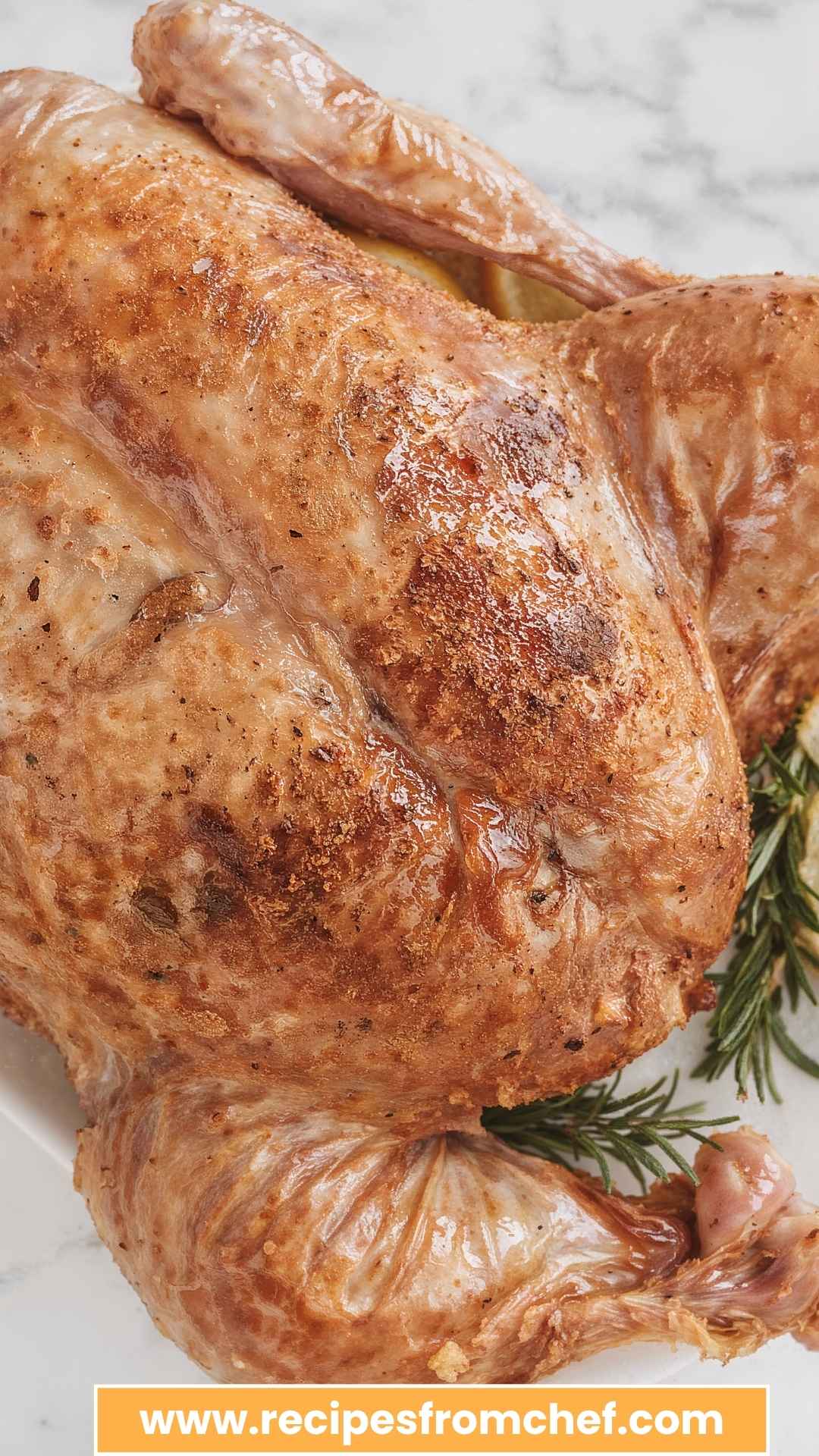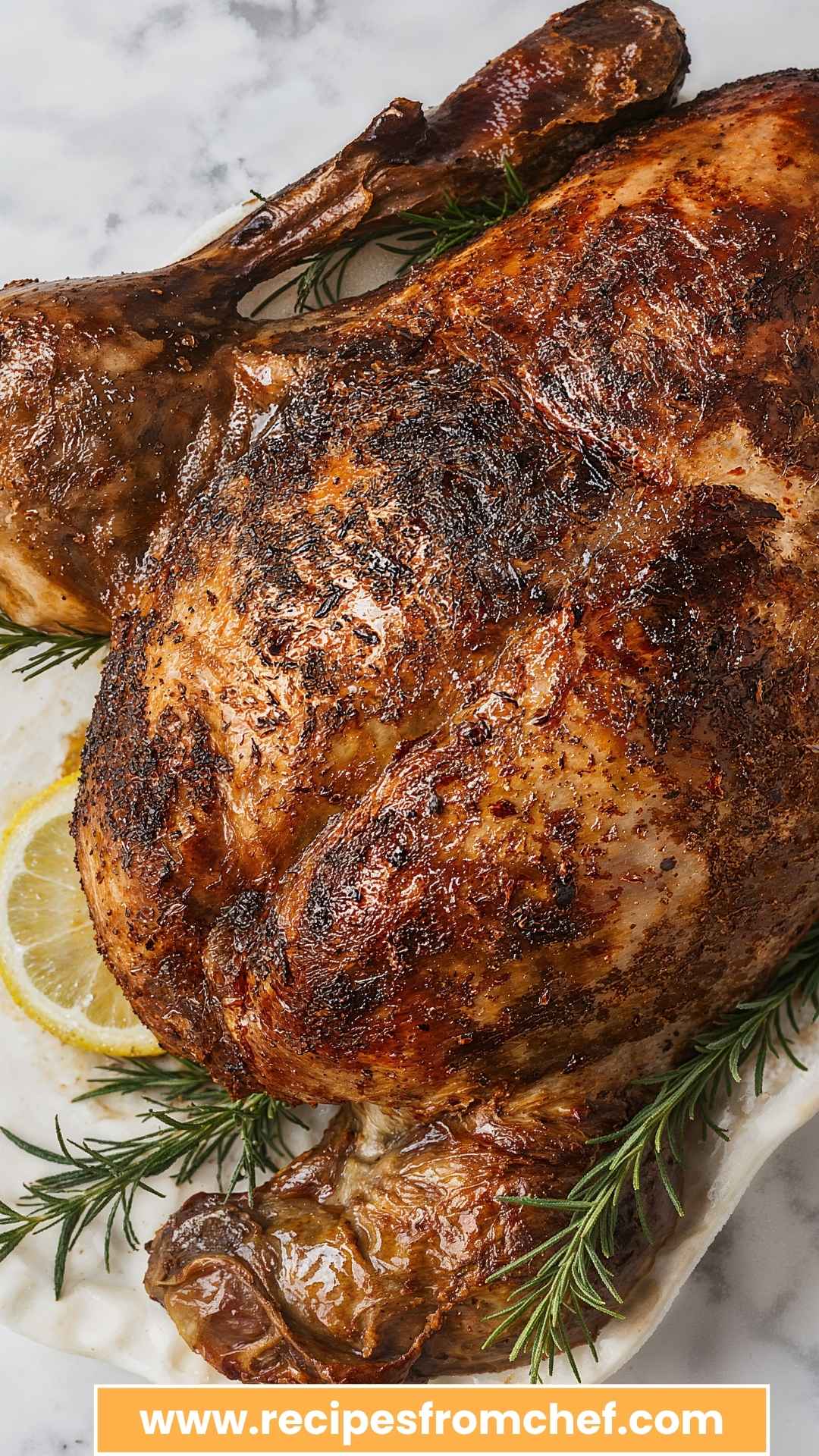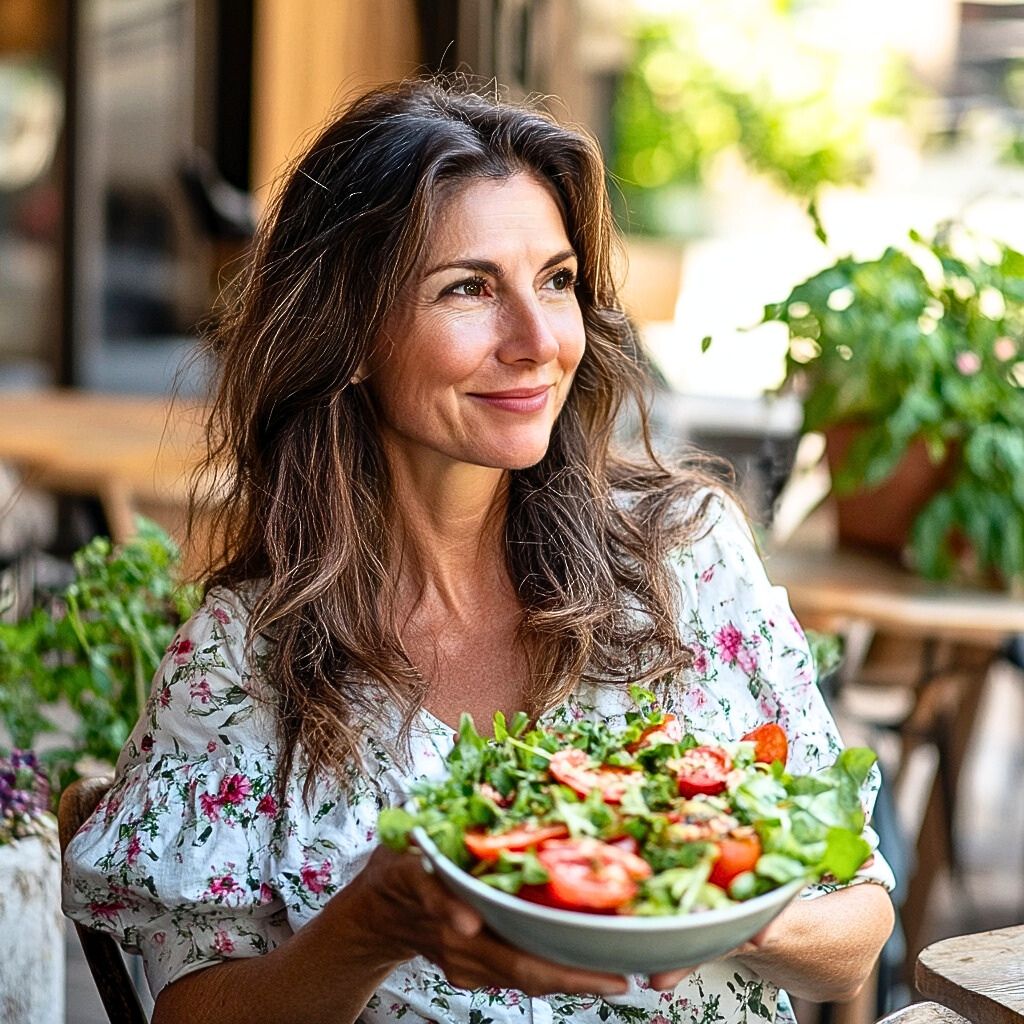When you're hosting a gathering, it's not just about the turkey; it's about the whole spread. Picture this: crisp green beans, garlic mashed potatoes, and homemade cranberry sauce. These sides elevate your turkey dish and create an unforgettable meal.
As much as I love turkey, a well-rounded plate makes everything better. Plus, don't forget a refreshing salad to balance the flavors. In the winter months, a warm butternut squash salad may hit the spot. And for dessert? Pumpkin pie or pecan pie will close the meal with a sweet note.
Ingredients List
3 cloves garlic, gently smashed
Adds a subtle savoriness that lingers in a wonderful way.
1 small yellow onion, quartered
For aromatic depth that will permeate the meat beautifully.
2 cups low-sodium chicken broth, turkey stock, or water for roasting
Provides a flavorful base to keep the turkey moist.
Freshly ground black pepper
Balances seasoning and enhances all the flavors.
Kosher salt
I recommend seasoning generously; it’s key for flavor.
4 sprigs of fresh herbs (thyme, rosemary, sage, or a fragrant mix)
Provides a fresh aroma that complements the turkey magnificently.
8 tablespoons (1 stick) unsalted butter, at room temperature
This will make the skin crispy and golden brown.
1 whole turkey (12 to 15 pounds), fully thawed if previously frozen
The star of the show! Make sure it's thawed for even cooking.
How To Cook Turkey
The process of cooking a turkey may seem intimidating, but with a step-by-step guide, you’ll find it’s quite straightforward. Let’s break it down!
Step 1: Prepping the Turkey
Begin by thoroughly rinsing your turkey under cold water. I’ve learned that this initial rinse can help remove any residual blood and ensures cleanliness. Once rinsed, it’s time to pat it dry with paper towels.
Now, season the cavity generously with kosher salt and freshly ground black pepper. This step is crucial—much of the turkey's flavor begins here.
Step 2: Aromatics Are Key
In a large bowl, combine the smashed garlic, quartered onion, and fresh herbs. Place this aromatic mixture inside the turkey’s cavity.
These flavors will seep into the meat as it roasts. Honestly, the smell alone will have everyone excited for dinner.
Step 3: Butter It Up
Take that room-temperature unsalted butter and gently slide pats under the turkey skin. This is where the magic starts.
The butter keeps the meat moist and provides a golden finish. Don’t be shy! A little goes a long way.
Step 4: The Perfect Roasting Bed
Now, in a roasting pan, pour in the chicken broth or turkey stock (or water if that’s all you have). This liquid will help keep the turkey from drying out while offering a base for your gravy later on.
Let the turkey rest on a rack in the pan, elevating it above the liquid. You want it to roast, not boil!
Step 5: Seasoning the Skin
Now it’s time to season the turkey skin generously with kosher salt and black pepper. I can't stress enough how critical this part is. It enhances the flavors and creates a beautifully flavored crust.
Step 6: Roast Away
Preheat your oven to 325°F (163°C). Place that turkey in the oven, and let it roast. A general rule is about 13-15 minutes per pound.
A meat thermometer is your best friend here. Aim for an internal temperature of 165°F in the thickest part of the breast.
Consider basting the turkey every 30 minutes with the pan juices to keep it juicy and moist. If you don’t want to manage basting, that’s perfectly fine! The key is to trust the process.
Step 7: Resting Time
After you've pulled the turkey out of the oven, resist the urge to carve it right away. Resting is crucial. Let it rest for at least 20-30 minutes to allow the juices to redistribute. This step ensures a tender and juicy turkey.
Recipe Notes
Garlic: I find smashed garlic to be more flavorful than minced. It infuses beautifully but doesn’t overpower the dish.
Yellow Onion: When cooked, it caramelizes and sweetens, creating a perfect backdrop for your turkey.
Low-Sodium Broth: If you’re like me and prefer a low-sodium option, use homemade stock or store-bought, but always remember to balance the added salt elsewhere.
Fresh Herbs: Fresh herbs breathe life into the turkey. Feel free to mix and match! Parsley and tarragon can also work great.
Butter: Room temperature is key. If you attempt to use cold butter, it’s much harder to work with.
Whole Turkey: Ensure it’s completely thawed if frozen. A slow thaw in the fridge is safest and best for flavor.
Recipe Variations
Want to mix things up? Here are a few adjustments that can make a difference:
Herb-Infused Butter: Add herbs to your butter. Rosemary or thyme pair superbly with turkey.
Citrus Twist: Toss some lemon or orange slices into the cavity alongside the herbs for vibrant flavor.
Sweet Orange Glaze: Mix orange juice and honey and baste once or twice during cooking.
Spicy Kick: Incorporate red pepper flakes into the herb mixture for a bit of heat.
Stuffed Turkey: If you're adventurous, consider stuffing your turkey with your favorite stuffing mix. Just remember not to overstuff!
Conclusion
Cooking turkey doesn’t have to be intimidating. With the right ingredients and method, you can achieve a beautifully roasted bird that will be the centerpiece of your meal. Remember, it’s all about building flavors, patience, and, of course, a little love.
Next time you're faced with turkey roasting, trust the process and enjoy every moment. Gather the family around the table and celebrate a meal that will foster connections and create memories.
Here’s to successful turkey cooking and many festive gatherings ahead!
You’ll also like the following recipes!

